
- ‘We were pretty sure they were Chinese’: the Kenyans who believe they’re descended from shipwrecked sailors of 15th century admiral Zheng He’s fleet
Tucked into the labyrinth of narrow alleyways in Pate Island’s Siyu village, Mama Baraka’s house itself isn’t much to see, with its cracking clay walls and poorly lit rooms draped with mosquito nets.
But one feature in this typical house on Pate, a tiny island off the coast of Kenya, has brought curious observers from afar: a single porcelain bowl that has been passed down through Mama’s family, an artefact that she says proves her ancestors came from China, by boat, hundreds of years ago.
“We have kept the bowl as a family treasure for generations,” says 75-year-old Mama. “Ever since I was a kid, my grandparents would tell me that our family was part Chinese and we should never forget our ancestry.”
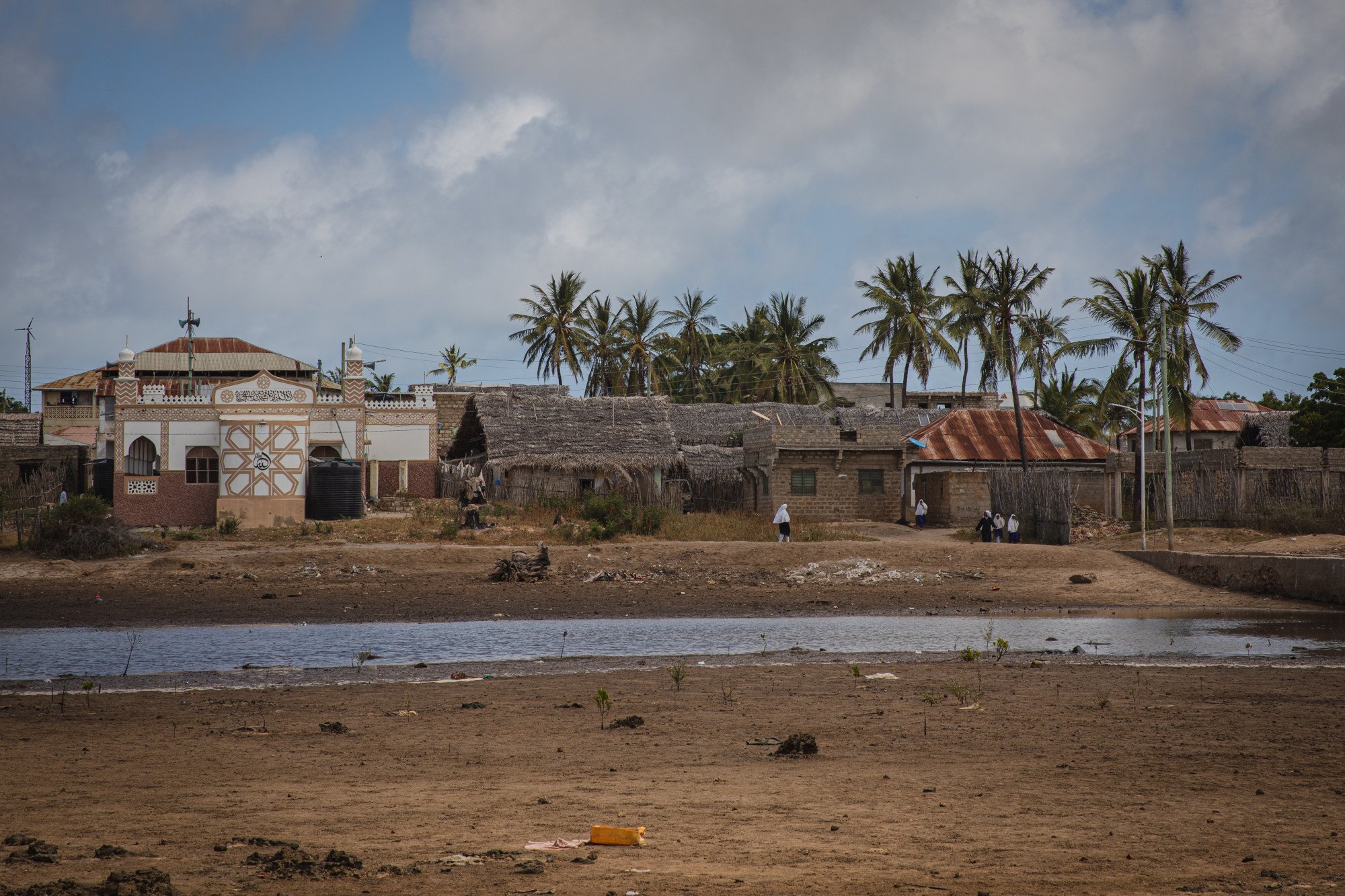
“My mother was called Safina, the Arabic word for ‘ship’,” says Mama, sitting under her house’s eaves to find some relief from the unforgiving heat. “Because my grandmother wanted her to remember her heritage: her ancestor arrived in Pate from a ship all the way from China.”
The first portrait of China’s feared empress dowager was by … an American?
With over 26,000 sailors aboard 300 or more ships – the biggest of which exceeded 120 metres (394 feet) in length, and 63 of which were treasure ships – the fleet under his command was the largest the world would see until World War I. (Christopher Columbus’ fleet in the late 1400s consisted of three ships, the biggest of which, the Santa Maria, was about 36 metres long.)
According to the Mao Kun map, also known as Zheng He’s Navigation Map and the world’s oldest nautical atlas, the circumnavigator’s fifth, sixth and seventh expeditions led the fleet through the Malacca Strait, skirting the southern tips of the Indian peninsula, and tapping the Swahili coast as far south as modern-day Mozambique.
Cities such as Mombasa, the oldest port city in Kenya, were marked on the map.
Local legend has it that one of Zheng’s ships was swallowed by a storm off the coast of Pate Island and hit a rock before sinking to the bed of the Indian Ocean. This would have to have been between 1417 and 1433, the only period during which, according to most scholars, Zheng and his sailors reached the East African coast.
Mama lights up when speaking of the marooned sailors washed ashore at Shanga: “That’s when our family story began.”
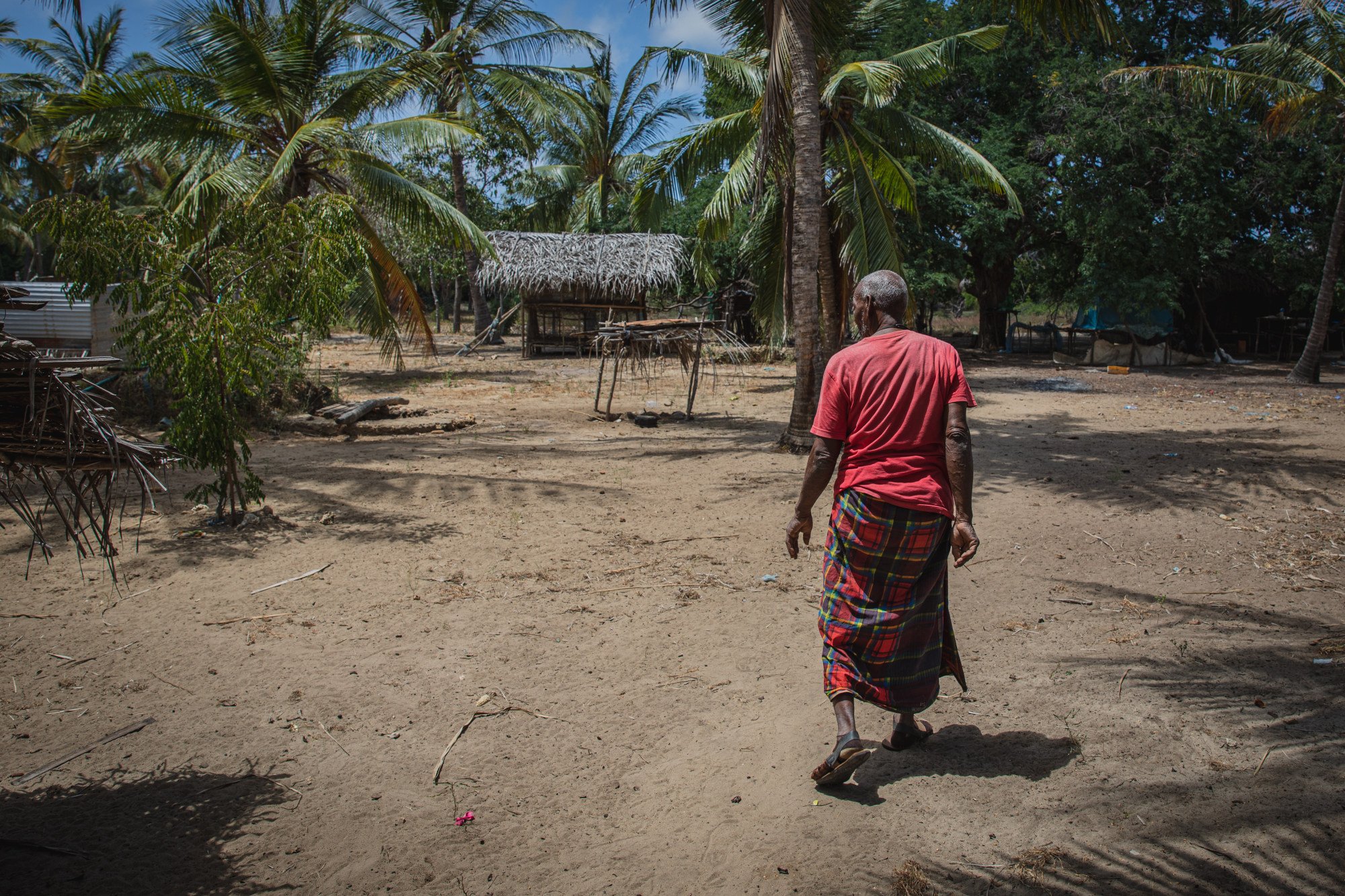
However, she says, “we were a very closed community so maybe they were not welcomed”.
“But at the time, the village had a few pythons and they were giving the locals lots of trouble, so the villagers told the Chinese sailors that if they could help kill the pythons, they could stay.
“And they did manage to kill the snakes and cleared the trouble for us, so locals welcomed them and then they converted to Islam, married local women and started families.”
There is no mention of how many sailors established families in Shanga, and Mama does not know how many came ashore that day, but “we have been living in this house for centuries, and this is where I grew up and where I raised my children”.
This tale first reached a wider public in 1994 with the release of Louise Levathes’ book When China Ruled the Seas. In the epilogue, the author writes briefly of the supposedly Chinese descendants on Pate Island.

Inspired by this text, American journalist Nicholas Kristof visited the island in 1999 and elevated it to a new level of fame in an article for The New York Times.
This possible history only made headlines in China in 2003, when Li Xinfeng, a reporter from the People’s Daily, travelled to Pate and brought this story to a Chinese audience.
On land, from the Tanzania-Zambia railway to Entebbe International Airport in Uganda, China has poured huge sums of money into infrastructure development in Africa.
Sex, violence, suicide: Italian love triangle scandal in 1920s China
At sea, China introduced the 21st Century Maritime Silk Road, which connects coastal countries from Southeast Asia all the way to the African coast, aimed at fostering economic collaboration between these nations.
This sea corridor largely overlaps the route that Zheng took 600 years ago.
“I had a few friends, who unfortunately have all died, who had fair skin and smaller eyes,” says Walid Bihala, a Siyu villager in his 80s. “We were all pretty sure that they were Chinese, and that’s what their families told them, too.”
Mansour Ile, another Siyu local, in his 50s, says his hobby, since he heard the Chinese shipwreck story a few decades ago, has been to walk along the coast and collect porcelain washed up on the shore. He says that even today, he is still finding treasures.
Showing his collection of broken pieces of bowls that bear resemblance to traditional Chinese porcelain design, Mansour is visibly proud.

“Professor Mark Horton from the UK once came to my house when he was doing research here and helped me identify some porcelains,” he says. Mansour picks up one piece and says, “This, for example, is from Europe.” He picks up another, dusting it off, saying, “This one is from China, but I’m not sure which dynasty it was.
“My neighbours keep telling me I should sell these and maybe I can make a fortune but I will never sell, because this is part of our heritage.”
Mansour suggests a visit to Shanga village, a 30-minute motorbike ride away, now deserted, with weeds covering barely walkable paths.
Sitting under a sprawling baobab tree by the shore facing two fishing boats mooring on the sand, Mansour points to the tip of what appears to be a great rock, hundreds of metres from the shore. “That’s the rock that the Chinese ship hit,” he says, “just like the iceberg to the Titanic.”
Curious tourists were not the only ones to descend on the island following the initial news reports. In December 2002, the Chinese embassy in Kenya sent two diplomats to visit the Lamu archipelago, marking their first official visit to this island, and from 2010, Chinese archaeologists also came.
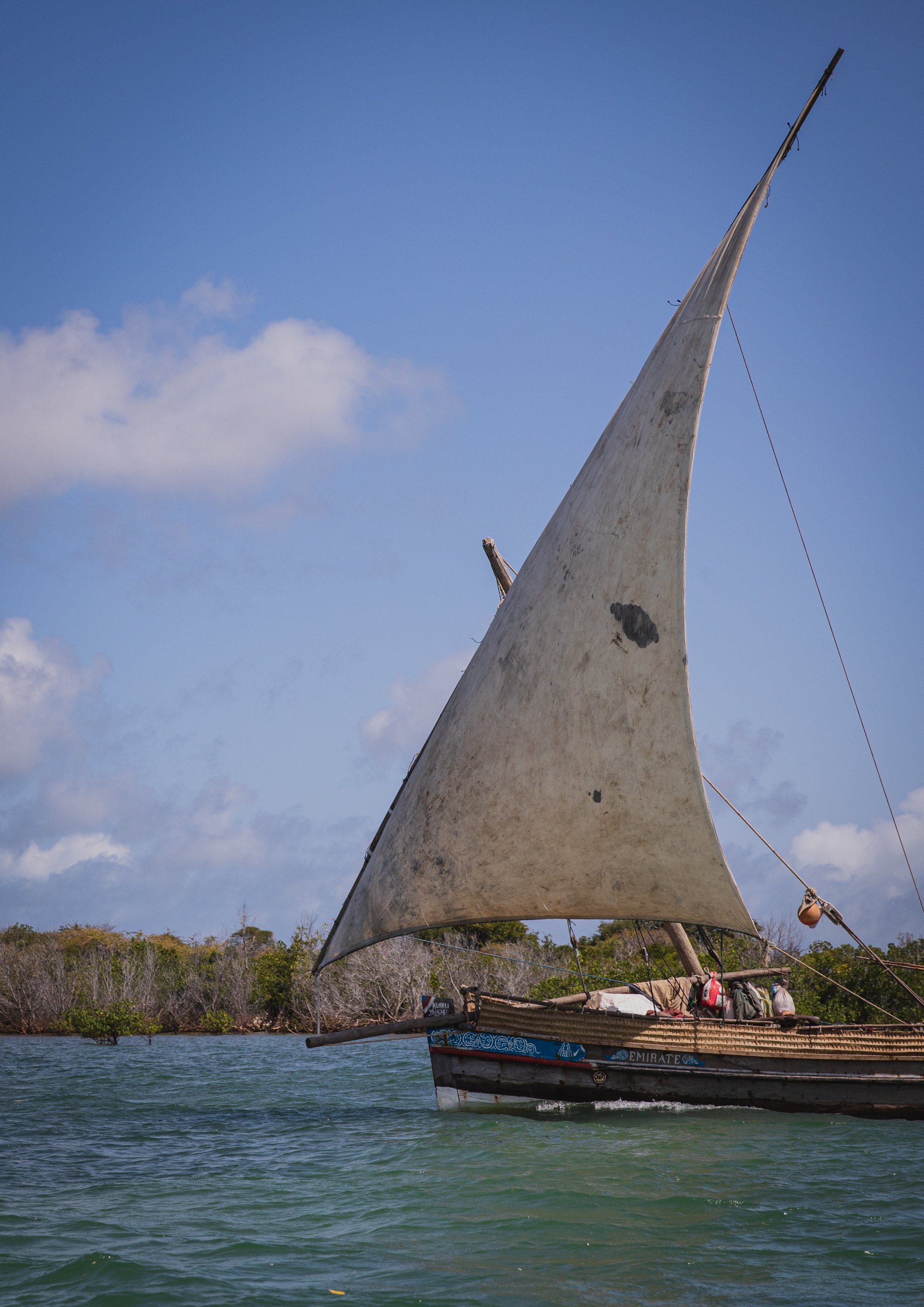
“We know about this story from our grandparents,” says Mama, recalling the thrill of telling her story to both Kenyan and Chinese archaeologists, “so it was nice to see Chinese people coming and telling us that the story is true.”
In December 2005, the National Cultural Heritage Administration of China signed a memorandum with the Kenyan government to lay groundwork for a collaboration on archaeological missions in the Lamu archipelago.
Then in 2010, China sent a team of archaeologists from the National Museum, the Henan Provincial Administration of Cultural Heritage and Peking University to collaborate with Kenyan experts, including those from the National Museums of Kenya, on excavation efforts. It was the first time China had dispatched a cross-border excavation team.
From 2010 to 2013, teams conducted three archaeological missions, seeking confirmation that Zheng’s sailors had indeed been present here. Professor Herman Kiriama, former head of coastal archaeology at the National Museums of Kenya, led the Kenyan archaeologists collaborating with Chinese counterparts on a 2010 underwater mission.
“We didn’t find any ship that was supposed to be of Zheng He’s fleet even after years of searching,” says Kiriama over the phone. “The currents are strong and the sea floor patterns have shifted dramatically over the years. There could be a ship, but we just can’t find it.”
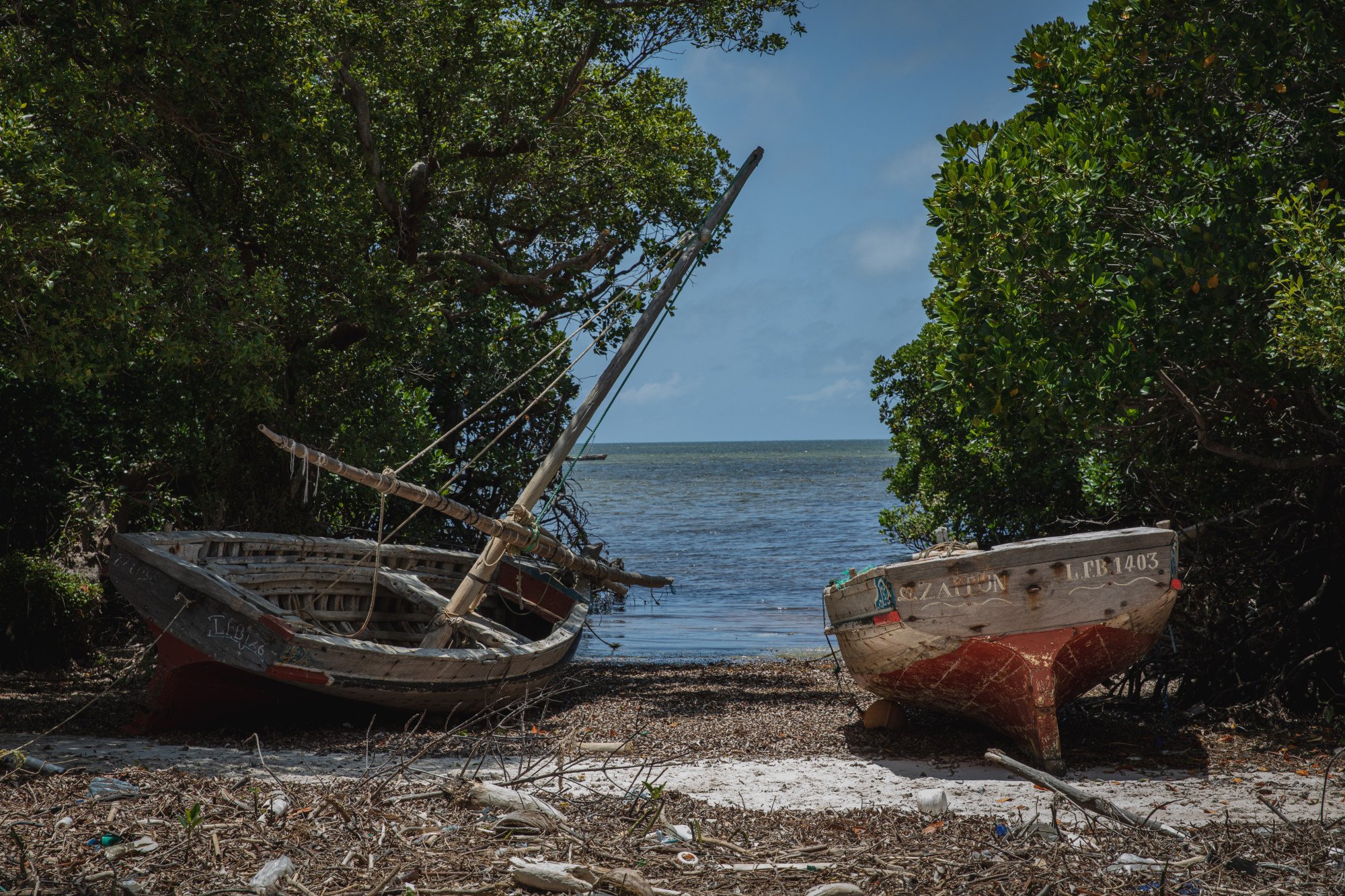
Nevertheless, the expedition did yield some promising finds off the coast of Malindi, a coastal town that between the 9th and 15th centuries was the centre of the kingdom of Malindi, a Bantu civilisation that appeared on Zheng He’s Navigation Map, and a prominent location for trade with the Arabs.
“[This] suggested that [the Mambrui site] is one of Zheng He’s landing spots in the early Ming dynasty,” reads a statement from the Institute of Archaeology at the Chinese Academy of Social Sciences, “providing materials for us to explore Zheng He’s voyage and his contact with East Africa.”
But this is far from conclusive. Portuguese explorer Vasco da Gama had skirted the Cape of Good Hope and reached India by way of the East African coast in 1498.
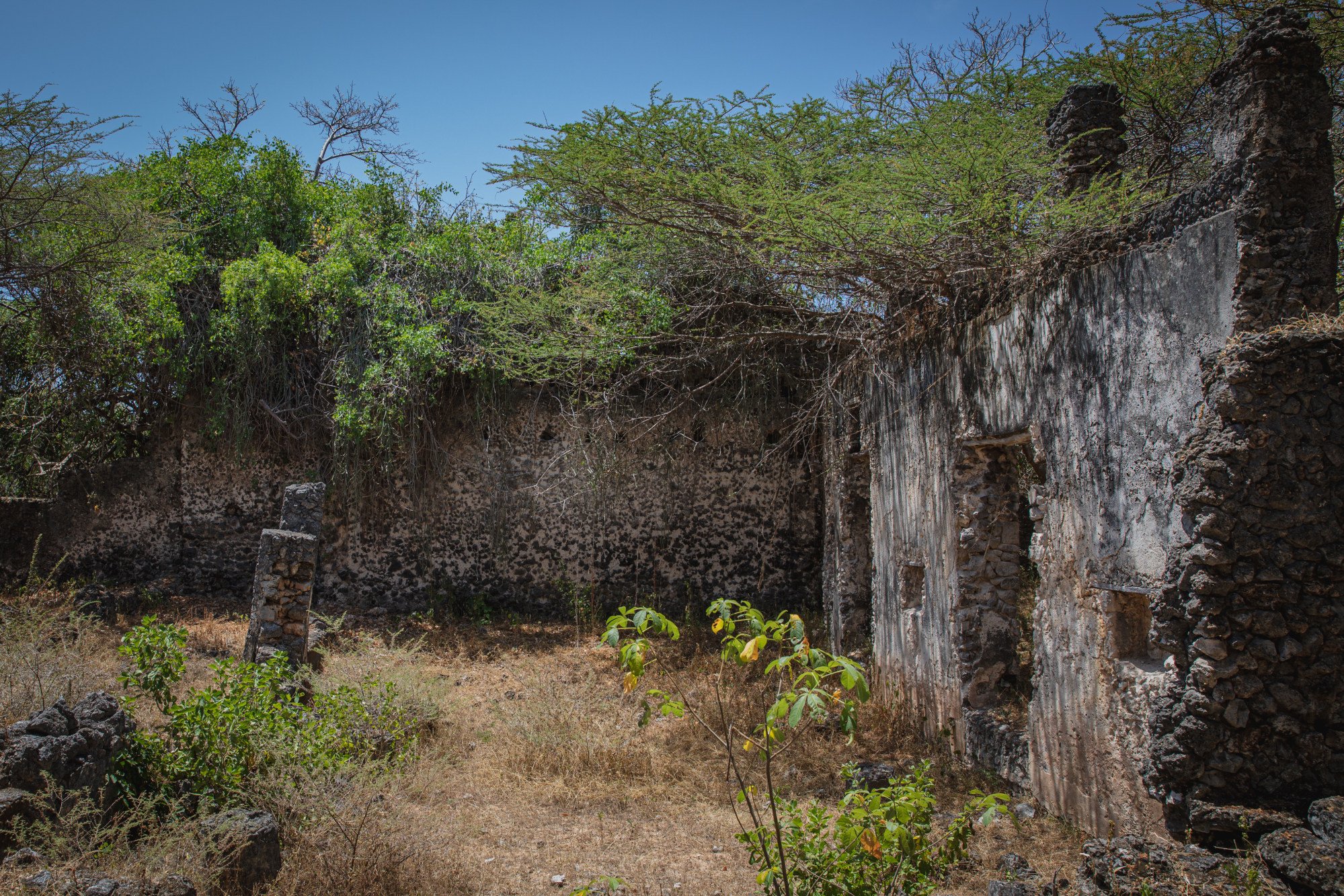
Following the establishment of that sea route, trade boomed between Asia and East Africa, and the relics that supposedly came with Zheng could also very well have reached Kenya in the Portuguese exchange of goods long after Zheng’s expedition.
“We waited for the result, and when I asked the team what the result showed, they just told me ‘It’s OK.’ They were not really government officials, so I guess it was just for the documentary,” says Mwamaka, referring to 1405 – The Voyages of Zheng He, commissioned by CCTV and the Jiangsu provincial government in 2002.
Neither Mama nor Mwamaka saw the test results, and no public records exist of the DNA test. That the tests were performed at all was enough for some Chinese media outlets to run with it.
The Nanjing Morning Post quoted Mwamaka in 2005 as saying she had been informed of the results and that they were “conclusive” that “Chinese genes run in her mother’s bloodline”.
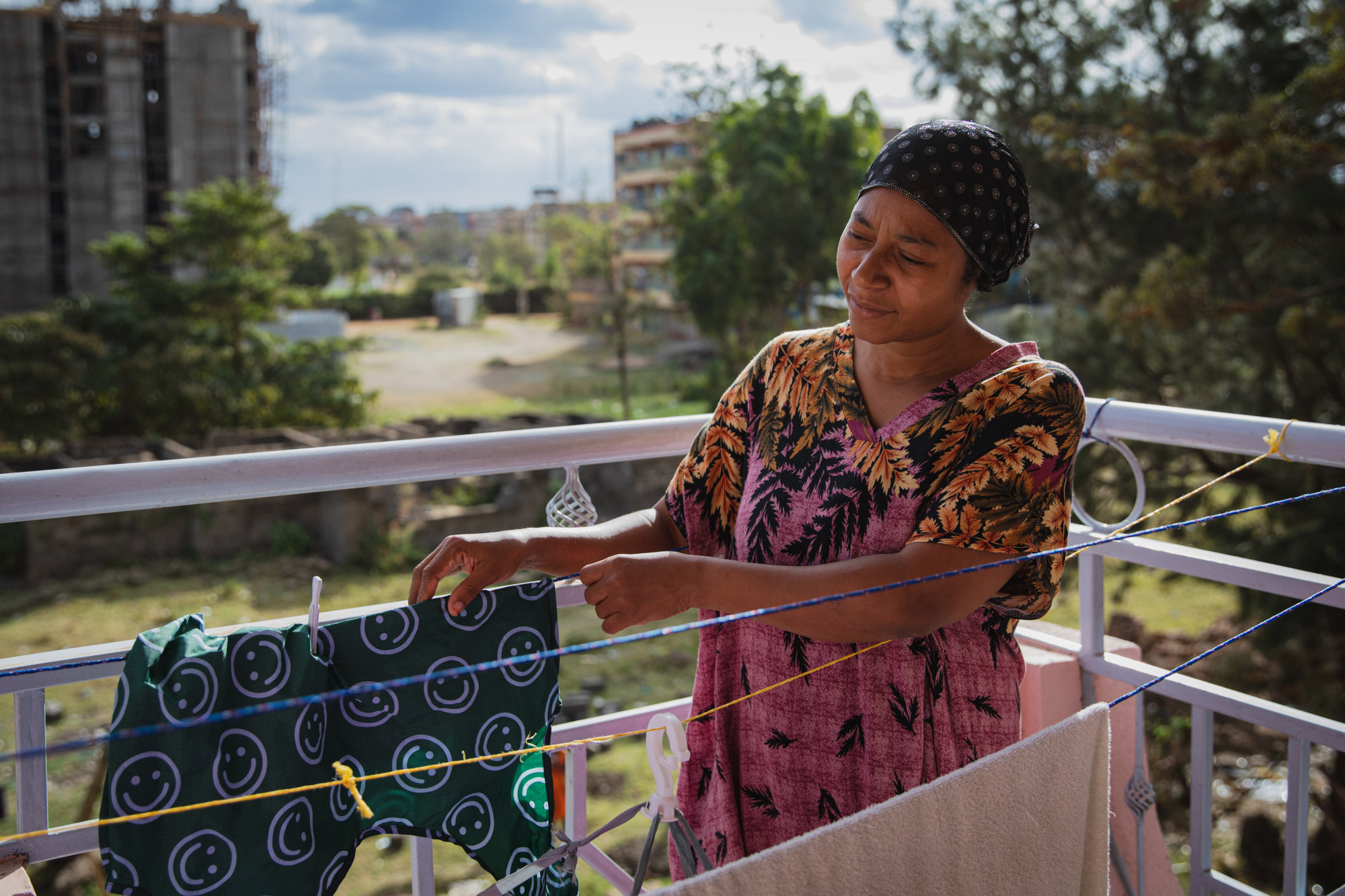
According to Mingqing Yuan, a fellow at Bayreuth International Graduate School of African Studies, in Germany, “The DNA test seems to be a scientific proof of bloodline, but it is not really scientifically sound, or even plausible, if the heterogeneity and ambiguity of Chinese DNA is considered.”
So much for science. But anecdotes abound. In the ruins of Shanga village, Mansour mentions that the name Shanga bears resemblance to Shanghai, and Siyu villagers have observed this as well.
Other Siyu locals such as Walid Bihala claim tombs dotted around the island were built by the Chinese, including one ancient-looking dome between Siyu and Shanga. Here, Mansour jumps off the motorbike and points: “There used to be porcelain in these dents, but people stole them because they were worth some money.”
He shakes his head. “They were built by the Chinese.”
According to Professor Qin Dashu, one of the archaeologists from Peking University, the dents that supposedly hosted porcelain on the dome could pass for a Chinese feature, but the inscription on the tombstones has mostly been eroded, and only three slabs of stone still preserve any text, all of which is in Arabic.
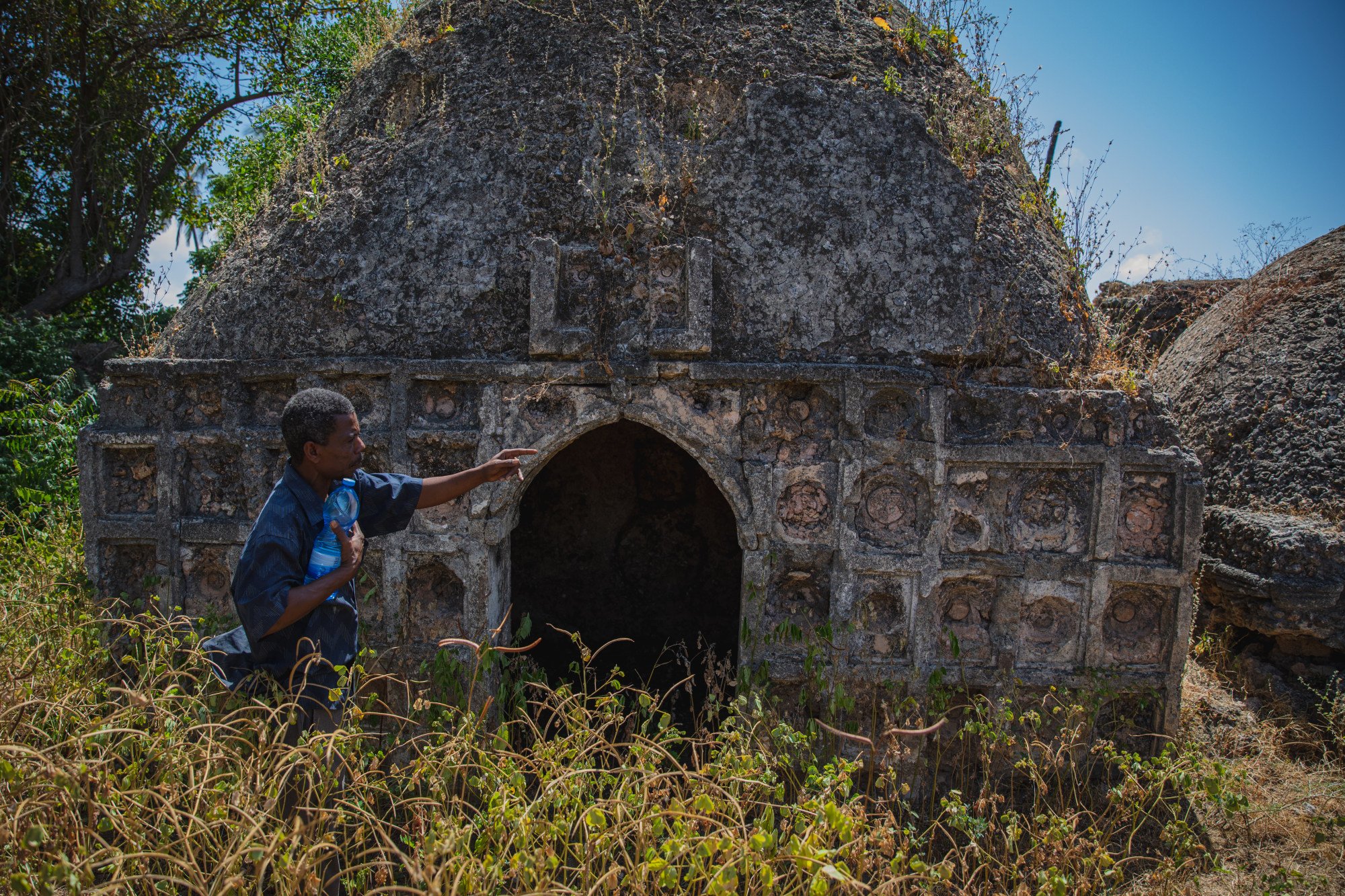
And Arab influence along the Swahili coast, from Somalia to Mozambique, is well documented. Muslim traders, mostly Arabs, settled in the region from the 8th century, followed by Persians in the 12th, and aside from Somalia being a Muslim country, most people on the Swahili coast through Kenya and Tanzania are still Sunni Muslims today (which could account for Pate island’s “lighter-skinned”, “smaller eyed”, inhabitants).
In addition to Qin’s bad news about the tombs, he says the bowl at Mama’s house has “nothing to do” with Zheng’s maritime foray. Based on the patterns and the techniques used in firing the porcelain, the bowl was made in the late Qing dynasty at the earliest, hundreds of years after Zheng.
Not that this absence of proof was going to stop a soft-power initiative. And Mwamaka would find herself at the centre of that mid-2000s Chinese media push as legends that had long been local chatter on Pate thrust her all the way to China itself, with the Chinese embassy in Nairobi directly overseeing her journey.
“I have always been the talkative one in the family, so when [Chinese reporters] came to our house, I would always be friendly and chat with them,” says Mwamaka. And all those state-sponsored reports brought attention to their state sponsors, and in 2005, Mwamaka says, she “was invited to Taicang city [in Jiangsu province] to attend the 600th anniversary celebration of Zheng He’s exploration”.
After the festivities in the city from which the circumnavigator had set off on his trips, she was invited for more in the Great Hall of the People, in Beijing, as an unexpected celebrity to mark the long and friendly history of China and Africa. Even if there was zero evidence of any of it.
‘The Chinese are very intelligent’: When Hong Kong enchanted sailors from afar
In 2017, Xi spoke of Zheng as a “friendly emissary”, who had built “a bridge for peace and East-West cooperation” – a myth that, according to Yuan at Bayreuth, was “constructed through selective remembering and forgetting based on political and economic intentions and force”.
Yuan says that the constant invocation of the myth of Zheng by the Chinese government is part of the “construction of itself as the legitimate inheritor of Zheng He’s historical legacy”, and the “spokesperson of Chinese ethnicity”.
“Wo hui jia le” (“I am home”) were the first words Mwamaka was taught to write in Chinese at the Taicang celebration, holding up the paper for the assembled cameras to capture.
“We are the descendants of Zheng He, and since you don’t have a family in China and you are also a descendant of Zheng He, you are part of our family,” Mwamaka recalls hearing from the family the local government had arranged for her to stay with.

“How does it feel to be back home?” asked a reporter with Xinhua when Mwamaka was in Taicang. “It feels nice,” Mwamaka answered.
Articles about Mwamaka’s journey from Kenya to China continued to appear long after the immediate media attention had faded. In 2017, the Overseas Chinese Network website ran a story on Mwamaka’s ethnicity, and again stated that the DNA test confirmed her Chinese bloodline.
Mwamaka says that during the Guests interview, she told the host she had never seen the DNA test result, but that part had been edited out of the final broadcast. In a story on 163, an online news portal, a writer adopted a first person narrative, writing that Mwamaka “always wanted to go to China because she was bullied by other people for looking different”.
“That wasn’t true,” laughs Mwamaka, sitting in her flat in Nairobi, rocking her one-year-old baby boy. “No one was hostile towards me, so I think they might just want to paint this picture of me only having China to go to.”
But after all this, and all the ways in which the story has been stretched to claim any link to the legend of Zheng He, there is one incontestable fact: Zheng was castrated at a young age. There will be no direct lineage to our swashbuckling adventurer for he was, in fact, a eunuch.
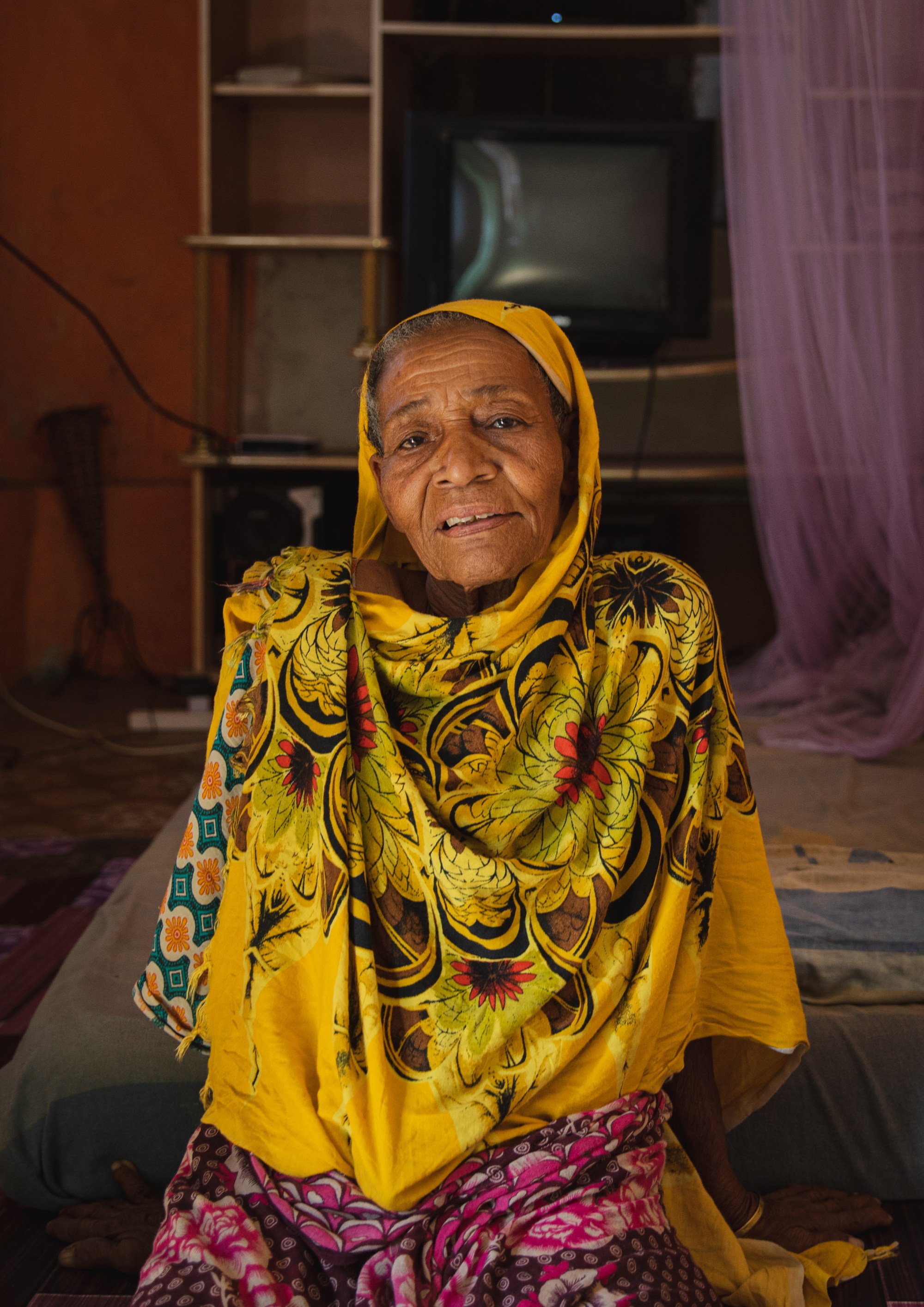
And while Zheng He is a household name in China, he rarely makes an impression in Kenya, even on Pate.
“Yes, I heard that a girl went to China to study because she’s Chinese,” says Walid, “but I don’t think that happens a lot, because I don’t think anyone else went.”
And as much as the matriarch likes talking up her Chinese history, Mama shrugs off any suggestion of making a pilgrimage herself.
“Of course I don’t want to go to China,” she laughs. “I don’t even want to go to Nairobi.”

